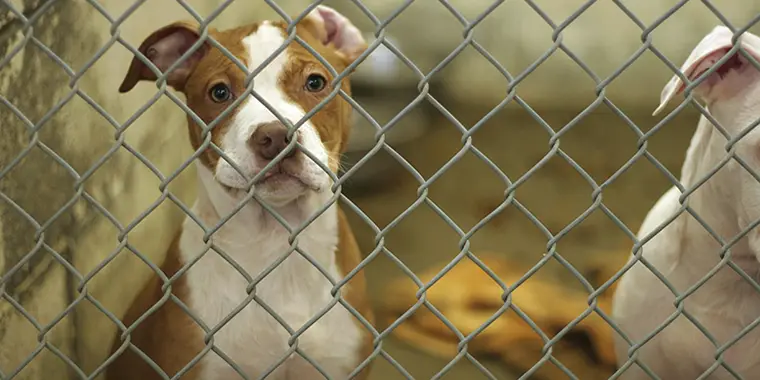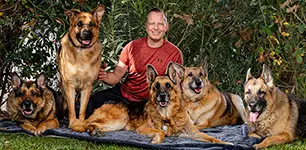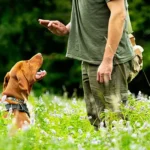
If you wonder how to rescue a dog, we have tips for you! Sadly, millions of dogs live in animal shelters across the nation. So when you are ready to add a new member to the family, animal shelters are a great place to find a wonderful companion. You don’t have to go to a breeder to get a good dog. Of course, there is nothing wrong with purpose-breeding. It is essential to maintain dog breed and health standards. There are good reasons to get purpose-bred puppies as working dogs, hunting dogs, service dogs, sport dogs, etc. However, shelters and rescues overflow with amazing dogs of all breeds, temperaments, and drives. So, when you’re looking for a great pet, please consider rescuing.
If you rescue from a shelter, you know you are saving a dog’s life and don’t inadvertently support puppy mills. Those are the main reason for pet overpopulation. Many dogs end up in shelters due to no fault of their own. Many were abandoned for no other reason than they were no longer wanted. That says a lot about the people who abandoned them, but we shouldn’t hold it against the dogs.
However, selecting your new best friend requires a considered choice, not an emotional one. Consider these points for a successful selection.
Before You Go
Before you rescue a dog from a shelter, please honestly assess your energy level and how much activity you can provide a dog. All dogs require a good amount of activity daily. Working and herding breeds will need more. If that is not possible now, dog ownership should probably wait until your schedule allows. Meeting a dog’s biological needs will go a long way in avoiding unwanted behaviors.
I recommend having the whole family discuss and agree on the house rules for your dog before it comes home. Where does it get to go, and where not? Where will it sleep? Who will play with it? Who will walk it, and for how long each day? Document the family rules and make a plan—holding all family members to it. It’s a family dog and not just one person’s dog. I also recommend research for anyone with their heart set on a specific breed—know what you’re getting yourself into. Most breeds can be found in shelters or breed-specific rescues.
Leave the kids at home the first time you go to the shelter. It’s best to preselect a few dogs that meet your family’s criteria and only let your kids choose from those dogs later on. Kids get emotionally attached too fast, and you might end up with an incompatible dog.
I own several pure-bred German Shepherds. All were rescued from shelters and rescue organizations. I know they are purebred because I tested their DNA for health and heritage with Embark.
At The Shelter
When you rescue a dog from a shelter, speak with kennel staff and ask them about the demeanor of the dogs you are interested in. Does it get along with other dogs? How about other pets like cats? How is it with children? The kennel helpers won’t have all the answers, but it can’t hurt to ask.
When meeting dogs at kennels, keeping some distance from the kennel bars is best. At first, avoid looking straight at the dog, talking to it, or even touching it—look sideways, don’t stare. Kneeling to be less intimidating can also be helpful. The ideal approach of a dog towards you is a slow, respectful but curious approach, with its nose forward—sniffing. This indicates curiosity and not fear. A dog that just runs up to you, excitedly wagging its tail and/or barking, is not simply happy to see you. These are signs of forward behavior, and/or high energy levels—such a dog can be harder to handle. Dogs that act like this are best left for knowledgeable dog rescuers who have experience with this sort of demeanor. You can, of course, also learn how to deal with this but please understand what you’re getting yourself into—just make an informed, considered decision.
The First Meeting
When you are ready to meet a particular dog, locate a kennel helper who can get it to the socialization area. Wait inside that area and let the helper bring the dog in. Ask them to bring the dog inside, close the door and let it go. Ideally, the helper waits outside. If that is not possible, ask them to stand to the side and leave the dog alone—you want to see as much of its regular behavior as possible. This first meeting is very important when you rescue a dog from a shelter. It will help determine your compatibility.
Initially, resist the temptation to interact with the dog at first. Don’t touch it. Don’t talk to it. Avoid looking at it directly. I know it’s hard but wait for the dog to come to you.
The typical behavior of a dog would be to ignore you in the beginning, check out the area first, and sniff around a bit before taking an interest in you. A dog who first asks itself, “Where am I?” and only then, “Who else is here?” is behaving the way a dog should. A dog that runs straight up to you has a more pushy attitude and will probably be a lot more work regarding training, leash-walking, and integration with existing family pets.
After checking out the area, its approach towards you should be respectful. The dog should approach curiously and slowly with his nose forward—sniffing first, then moving. It should, however, come to you eventually, and neither be fearful nor shy. Only once the dog has sniffed you should you start interacting. Avoid holding your hand out, it can be intimidating to the dog. It can smell you just fine without that.
Meeting Etiquette
Make every effort to be calm and respectful—I know it’s challenging. Keep your hands where the dog can see them. Surprising a dog is usually not a good idea, especially when you don’t know each other yet. It should see the hands that want to pet it and sniff them first. If it does, that is permission to move forward; if it doesn’t, don’t force it. The dog might need more time to be comfortable. Be patient.
Signs of a more challenging dog (meaning more need for training later on):
- Running straight up to you
- Dragging the handler
- Jumping up
- A lot of excitement in general
Signs of a more mellow dog (meaning an easier dog):
- Checking out the socialization area first and you second
- Approaching slowly with a lowered head and nose forward
- Keeping some distance at first but coming eventually (respect is good, fear is not)
There is, of course, nothing wrong with rescuing a dog who doesn’t behave in an ideal way, but be aware that such a dog will need a more knowledgeable handler, more training, and possibly other things should issues arise once it comes home with you.
These dog selection tips apply to dogs from all sources, including breeders. Generally, know that what a breeder considers a good fit for your family and what is a good fit can differ.
We hope these tips help you select a good shelter dog, and if you are looking for on-site support, we can assist in dog selection before, during, and after shelter visits. You can contact us using our contact form.
Play the Audio





